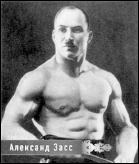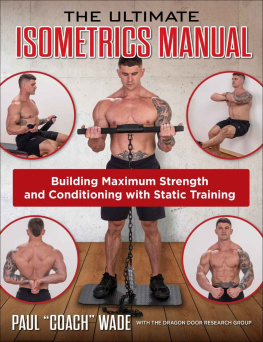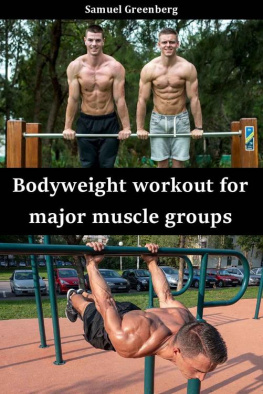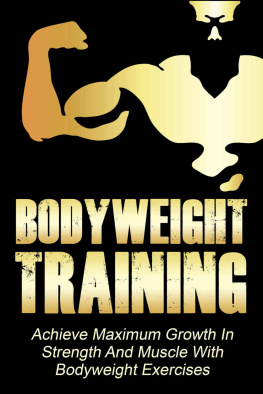Power Isometrics: Isometric Exercises For Muscle Building And Strength Training
By David Nordmark
Copyright 2010 David Nordmark
Discover other fitness titles by David Nordmark:
Lose Weight WITHOUT Dieting
Build Muscle Without Weights: The Complete Book Of Dynamic Self-Resistance Isotonic Exercises
The Stretching Exercises Bible
Animal Workouts
The Ultimate Guide To Pushups
Natural Fitness
Stretching For Golfers
Back Stretching
Smashwords Edition License Notes
This ebook is licensed for your personal enjoyment only. This ebook may not be re-sold or given away to other people. If you would like to share this book with another person, please purchase an additional copy for each recipient. If youre reading this book and did not purchase it, or it was not purchased for your use only, then please return to the applicable ebook store and purchase your own copy. Thank you for respecting the hard work of this author.
Disclaimer
The exercises and advice contained within this course may be too strenuous or dangerous for some people, and the reader(s) should consult a physician before engaging in them. The author and publisher of this course are not responsible in any manner whatsoever for any injury which may occur through reading and following the instructions herein.
Table Of Contents
If you are looking for a way to get in great shape and get stronger while sculpting your body in the least amount of time, then isometric exercises are for you. Why does this exercise system work so well? Let me explain.
Like many words isometrics is derived from the Greek. Iso meaning equal and metric meaning distance. When we refer to isometric exercise we are talking about an exercise system in which, although force is applied to the muscles, the muscles themselves never contract. Their muscular length remains the same. This is called an isometric contraction and it is the key to this entire course. Heres how it works.
Any muscle in your body is made up of thousands of muscle fibers of varying lengths and abilities. Some are explosively quick, others posses great endurance, while still others are extremely powerful. Any time your body needs to move a muscle your brain commands whatever muscle fibers it needs to start contracting.
Here is the key point when it comes to isometric muscle building - your body is very efficient and it only activates the bare minimum number of muscle fibers required. To demonstrate this, imagine you pick up a paper cup. As it only takes a few muscle fibers to generate the necessary force to contract the muscle to pick up the cup, that is all that is used. If you go to pick up something heavier like, say, a jug of lemonade, your body will use more muscle fibers. Still, it will never use ALL of them if it doesnt need to.
This is the whole principle behind workout routines like weightlifting. The reason you have to do 3 sets of 12 repetitions when performing a biceps curl is that you are trying to tire out and work ALL of the muscle fibers. So, as you initially start curling, your mind activates only the bare minimum of muscle fibers required. However, as you keep going, those fibers tire and our brain has to activate others to keep going. This process of muscle fibers tiring and being replaced in the task by others continues until (ideally) all of the muscle fibers have been worked. When you reach this point you may find it impossible to perform one more rep. This is called muscle failure in weightlifting and it means youve worked every muscle fiber in your biceps.
Now, instead of performing biceps curls with weights, what happens when you work your muscles against each other? Imagine you place your hands together palm-to-palm in front of your chest and you start squeezing as hard as you can. Your brain is getting the message that it is trying to move your right arm leftward and your left arm rightward. In order to do this it needs to contract muscles in both arms. It starts to do this but because there is no movement, no contraction occurs. How does your brain respond? It keeps recruiting more and more muscle fibers together in an attempt to contract the muscles and move the arms. It has no idea that this is a futile exercise as the arms are acting against themselves! In a way with an isometric contraction you are tricking your brain into using ALL of the available muscle fibers at the same time. This is why it is possible to exhaust ALL of the muscle fibers in 7 to 12 seconds. This is the secret of the isometric contraction and isometric exercises in general.

There are many stories I could tell that would demonstrate the amazing results possible when the isometric contraction is properly applied. However, I feel the best story concerns one Alexander Zass. A world famous strongman at the beginning of the last century, he was known by his stage name The Mighty Samson. He is also considered by many to be the father of isometric exercises. This is his story.
Young Alexander was born in Poland but raised in Russia. When he was a boy his grandfather took him to the circus. Of all the sights he saw there, it was the circus strongmen that impressed him the most. He vowed to become as strong as they were and join the circus himself one day. He started a muscle building training routine immediately, doing such activities as climbing trees and lifting barbells and dumbbells. It wasnt long before he was strong enough to join a circus. Once there he learned even more from the strongmen he worked with. He built his physique up and he was widely known for his great strength.
During World War I, however, Alexander Zass was captured and imprisoned by the Austrians. Confined to a cell and bound by shackles, Zass became despondent. How could he train when he could barely move? He feared that without exercise he would rapidly lose the incredible strength that he had worked so hard to acquire. Out of sheer frustration he began straining against the shackles that bound him and the prison bars that confined him. Without knowing it he began exercising using isometric contraction principles. Much to his surprise he found that this method of training allowed him to become stronger than ever before!
How strong did he get? So strong that when the opportunity presented itself he was able to bend and break the shackles that bound him BY HAND! Next he ripped out the prison bars, bent one of them into a J hook for scaling the wall, and was able to make his escape!
After the war, Alexander Zass toured Europe performing amazing feats of strength as the Mighty Samson. He was known for bending bars, breaking chains with his chest, lifting 500 pound girders with his teeth and carrying small horses. The only training method he used was isometric exercises - he never lifted weights again. Later he published a training book of isometric exercises that sold well throughout Europe. From reading the above is there any doubt in your mind what can be achieved with isometric muscle building? Whether you want to get stronger, build an impressive physique, or both, following this program can get you there.
The Power Isometrics course is divided into several different exercises by body part. For example, there are three exercises for your arms, seven for your back, etc. In general, each isometric muscle building exercise has three different positions (A, B and C) for which it can be performed. The exceptions for this are:
For some exercises, like the trapezius contraction, there is only one position.
There are A,B and C positions for the chest exercise. However, there are four different variations for each position.
Next page











